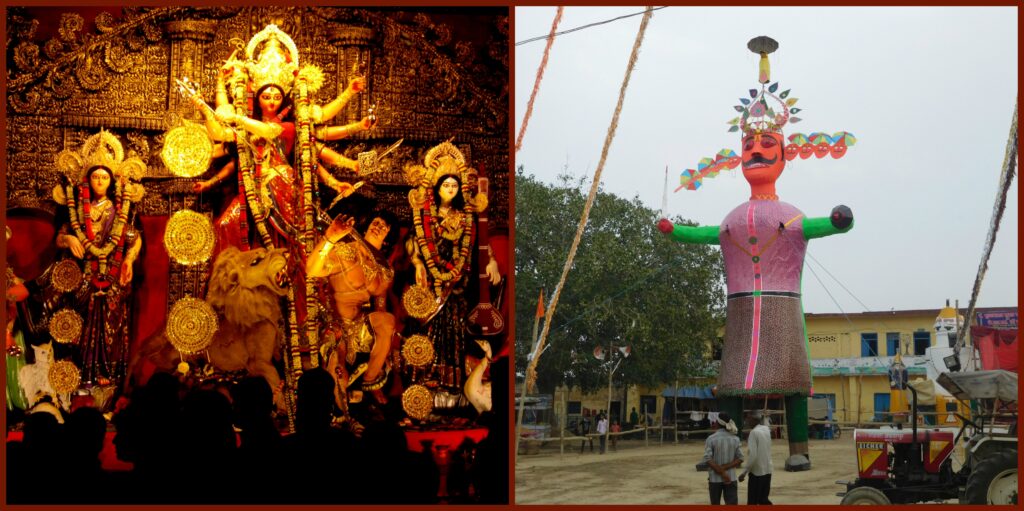What Is the Significance of Dussehra festival: Victory of good over evil
Dussehra, known as Vijayadashami, is one of India’s most significant and widely celebrated festivals, marking the triumph of good over evil. Observed on the tenth day of the Hindu lunar month of Ashwin, this festival is rooted in the rich traditions and mythology of India, making it a symbol of righteousness and moral victory.
The essence of Dussehra is deeply tied to two main stories from ancient Hindu texts. In the northern and western parts of India, Dussehra commemorates Lord Rama’s victory over the demon king Ravana, as described in the epic Ramayana. Ravana, the ten-headed ruler of Lanka, abducted Sita, Lord Rama’s wife. In his quest to rescue her, Lord Rama, aided by his brother Lakshmana and the devoted Hanuman, waged a fierce battle against Ravana. After ten days of war, Rama finally vanquished Ravana on the day of Dussehra, symbolizing the triumph of dharma (righteousness) over adharma (unrighteousness). This story is central to the festivities, and dramatic reenactments of the Ramayana, known as Ram Leela, are performed across many towns and cities. The highlight of the celebration is the burning of effigies of Ravana, Meghnath, and Kumbhkaran, symbolizing the destruction of evil forces.
In eastern and southern India, Dussehra is associated with the goddess Durga and her victory over the buffalo demon Mahishasura. The Navratri festival, which precedes Dussehra, is dedicated to worshipping the nine forms of Durga, culminating in the celebration of her triumph on Vijayadashami. In regions like West Bengal, this period is observed as Durga Puja, where elaborately crafted idols of the goddess are immersed in water bodies after grand processions, signifying her return to her heavenly abode.
Dussehra is not just a religious festival but also a celebration of Indian culture and community spirit. The festival is marked by fairs, cultural performances, and vibrant processions. In cities like Mysuru, Dussehra is celebrated with royal pomp and grandeur, with a majestic procession involving caparisoned elephants, horses, and traditional dancers.
The symbolism of Dussehra extends beyond its mythological roots. It serves as a reminder that good always prevails over evil, and no matter how powerful the forces of darkness may seem, they will eventually be defeated by truth and justice. The burning of Ravana’s effigy is not only a reenactment of an ancient battle but also a call to destroy our inner demons—greed, anger, jealousy, and ego.
In modern times, Dussehra continues to resonate with millions, providing an opportunity to reflect on the values of integrity, courage, and perseverance. It is a time when families come together, communities bond, and the spirit of victory and renewal is celebrated. The festival’s timing, at the end of the monsoon season, also signifies the start of a new harvest cycle, making it a time of both spiritual and agricultural renewal.
Dussehra is more than just a festival; it is a celebration of life’s fundamental truths. Whether it’s the victory of Rama over Ravana or Durga over Mahishasura, the message remains the same—righteousness, when pursued with dedication and devotion, will always emerge victorious. This timeless message continues to inspire people across India, making Dussehra a truly universal celebration of good over evil.
Source: https://www.jagranjosh.com/general-knowledge/why-dussehra-is-called-as-vijayadashmi-check-reasons-here-1698058629-1
https://www.britannica.com/topic/Dussehra
https://en.wikipedia.org/wiki/Vijayadashami#:~:text=Mysore%20Dasara%20procession%20and%20celebrations%20in%20Karnataka%20are%20a%20major%20tourist%20attraction.
